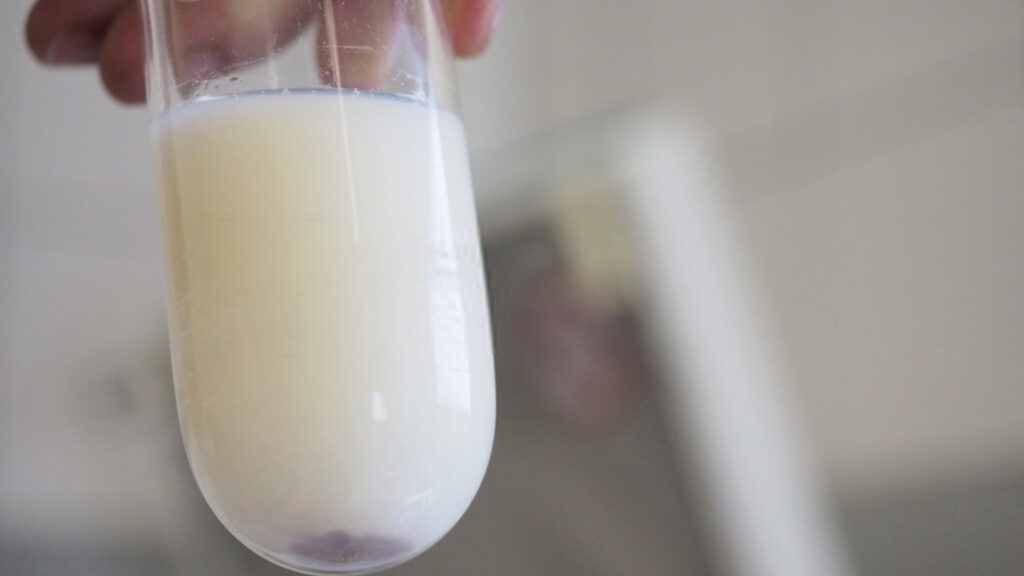What Are the Most Expensive Liquids in the World?
Ever spilled a drink and winced at the thought of wasting a few dollars? Now imagine knocking over a vial of scorpion venom—worth $39 million per gallon, or a single dose of Zolgensma, a life-saving gene therapy priced at $2.1 million for just 5.5 milliliters. And let’s not forget horse semen, which can fetch up to $49 million per gallon when it comes from elite stallions. These aren’t just expensive—they’re some of the priciest substances on Earth, where even a single drop can be worth more than a luxury car.
Why Do Some Liquids Cost More Than Entire Houses?
We tend to associate extreme value with rare metals, gemstones, and priceless artifacts, but some of the most expensive commodities in the world aren’t solid at all—they flow. These high-value liquids fuel medicine, technology, and even luxury industries, commanding astronomical prices for reasons that range from mind-blowing rarity to the near-impossible science behind their extraction.
1. They’re Found in Tiny, Hard-to-Access Quantities
Some of these liquids are so scarce that harvesting just a few milliliters can take weeks, months, or even years. Scorpion venom, for instance, is extracted one tiny drop at a time, with each scorpion producing just 2 milligrams per milking. To collect a single gallon, you’d have to milk nearly four million scorpions.
2. Their Extraction Methods Are Straight Out of a Sci-Fi Movie
Imagine a scientist carefully shocking a scorpion’s tail to collect its venom or a team of researchers bleeding thousands of horseshoe crabs for their rare, bacteria-detecting blue blood. Some of these extraction processes are so delicate, dangerous, or labor-intensive that they drive up the cost to levels beyond imagination.
3. They’re Essential to Cutting-Edge Science
Many of these expensive liquids are not just valuable—they’re irreplaceable in modern medicine and technology.
- Zolgensma is a breakthrough one-time gene therapy for spinal muscular atrophy, delivering a functional gene replacement directly into the body. At over $2 million per dose, it’s one of the most expensive treatments in history.
- Scorpion venom contains peptides that could revolutionize cancer treatment and pain relief, making it worth more than gold, platinum, or even diamonds per gram.
- Horse semen, specifically from champion thoroughbreds, is valued at tens of millions of dollars per gallon because of its potential to produce the next generation of elite racehorses.
4. They Power Industries You Don’t Even Realize
From life-saving vaccines tested with horseshoe crab blood to exotic perfume ingredients that cost more per ounce than solid gold, these liquids silently fuel multiple industries. They may not make headlines every day, but without them, modern medicine, technology, and even luxury markets wouldn’t exist.
Welcome to the World of Liquid Gold
From the deadliest venoms to cutting-edge gene therapy, the world’s most expensive liquids reveal a hidden economy where value isn’t measured by weight, but by rarity, utility, and the painstaking processes required to produce them. In the following sections, we’ll explore these fascinating substances—how they’re harvested, why they’re so valuable, and the impact they have on the world.
And trust us, after reading this, you’ll never look at a spilled drink the same way again.
You may also like to read: Why is scorpion venom so expensive? Everything you need to know
17. Liquid Paper – $200 per gallon
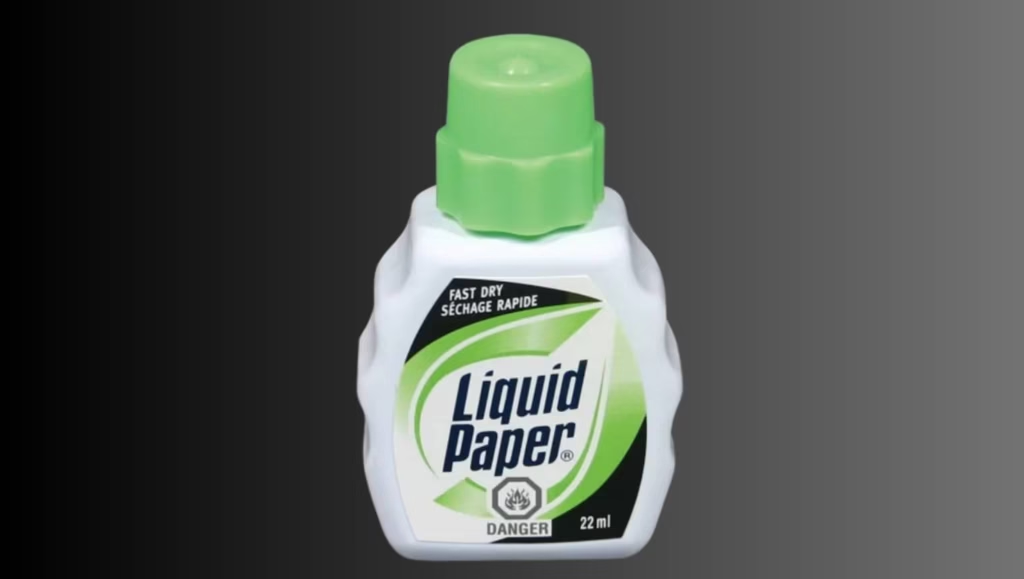
The Marvelous Mistake-Eraser That Made Millions
Ever made a typo and wished you could just poof it away? Back in 1956, a creative secretary named Bette Nesmith Graham (who happened to be the mother of Monkees band member Michael Nesmith) was thinking the exact same thing!
Instead of just complaining about her typing errors, this resourceful mom took matters into her own hands. Quite literally – she mixed up a concoction in her kitchen blender that would forever change the office supply world. Talk about a kitchen experiment gone wonderfully right!
From Kitchen Blender to Corporate Empire
Get this: Graham actually approached IBM with her miraculous mistake-masking potion, and in what might be one of history’s most face-palm-worthy business decisions, they showed her the door! Undeterred, this pioneering businesswoman simply shrugged and said, “I’ll do it myself!” (at least, that’s how I imagine it went down).
For 17 years, Graham operated her correction fluid empire from her house, patiently building her brand until it finally became profitable in 1968. Fast forward to 1979, and the Gillette Corporation recognized what IBM had missed, snatching up the company for a jaw-dropping $47.5 million. Not too shabby for a homemade typing fix!
The $200 Per Gallon Secret Sauce
What makes this seemingly simple white goop command such a premium price? It’s all about the chemistry!
According to the Material Safety Data Sheet (MSDS), Liquid Paper contains a fascinating blend of:
- Solvent naphtha (a petroleum distillate that gives it that distinctive “office supply” smell)
- Specialized resins (the binding agents that help it stick to paper)
- Titanium dioxide (the brilliant white pigment that covers your mistakes)
- Mineral spirits (helping everything blend together perfectly)
- Dispersants (keeping all ingredients properly mixed)
- Fragrances (because who doesn’t want their corrections to smell nice?)
Fun Fact: At $200 per gallon, Liquid Paper is worth more than some fine wines! The next time you dab a little white correction fluid on your document, remember you’re applying a liquid that’s technically worth about 50 cents per tablespoon!
The story of Liquid Paper reminds us that sometimes the most valuable innovations aren’t flashy tech breakthroughs but practical solutions to everyday problems. From a frustrated secretary’s kitchen experiment to a multi-million dollar empire, this little white liquid continues to save face (and documents) in offices around the world!
16. Scintillation Cocktail – $210 per gallon
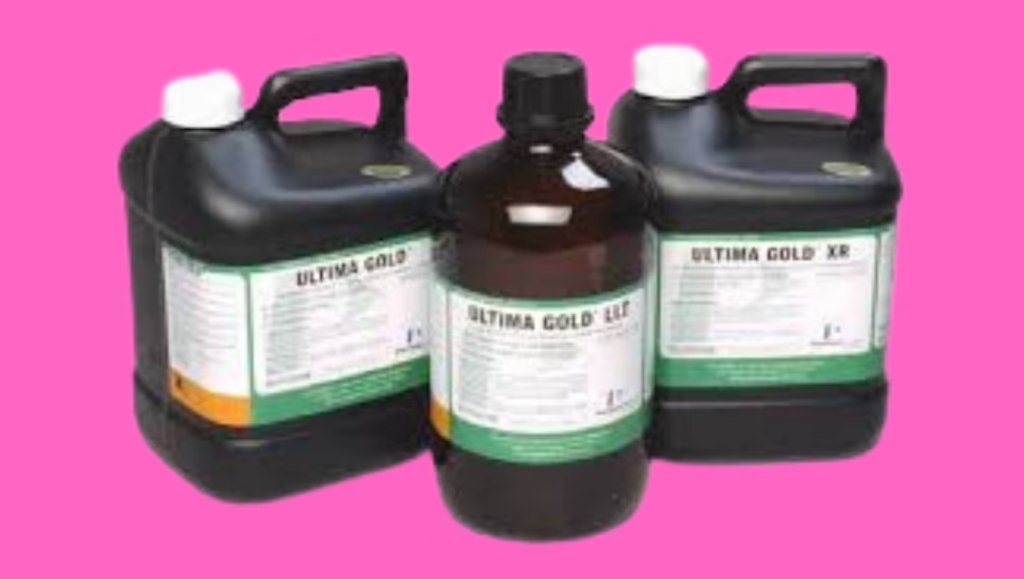
Forget your fancy martinis and designer smoothies – the scientific world’s most exclusive “cocktail” comes with a $210 per gallon price tag and won’t give you a buzz (unless you’re a particle physicist, that is)!
The Glow-in-the-Dark Detective Juice
Scintillation cocktails are basically the CSI teams of the particle world. These specialized mixtures contain molecular detectives that catch the tiniest criminals in physics – alpha and beta particles – by making them literally light up when caught!
Each cocktail is a masterful blend of:
- One or more scintillators (the star ingredients that transform invisible energy into visible light)
- At least one organic solvent (think of it as the bartender’s mixing base)
- A special combination of surfactants (the party hosts that welcome water-based samples to the molecular shindig)
When these ingredients come together, magic happens! The scintillator molecules hang out in the solvent, patiently waiting to absorb energy released by those sneaky radioactive particles. Then – FLASH! – they re-emit that energy as visible light with wavelengths around 420 nanometers (that’s blue light, for those of us who don’t speak wavelength).
Why So Fancy-Schmancy?
You might be wondering: why does this scientific concoction cost more than some premium whiskeys? Well, creating the perfect particle-detecting potion isn’t as simple as mixing a few chemicals and calling it a day!
Each batch undergoes a rigorous quality control process that would make even the snobbiest wine taster impressed:
- Sample acceptance testing (Will it play nice with your experiment?)
- Chemiluminescence checks (No false positives allowed!)
- Sample capacity verification (How much can this party host?)
- Clarity assessment (Nobody likes a cloudy cocktail!)
- Photoluminescence examination (Just how bright is that flash?)
- Counting efficiency validation (Can it catch ALL the particles?)
Fun Fact: These scientific cocktails have a “Fluorescence Quantum Yield” higher than your smartphone’s fancy OLED screen! And with decay times measured in nanoseconds, they’re the sprinters of the scientific world – catch that flash if you can!
The Unsung Heroes of Nuclear Science
Next time you hear about breakthroughs in radioactive dating, medical isotope research, or environmental radiation monitoring, spare a thought for these unsung liquid heroes. At $210 per gallon, they’re silently illuminating the invisible world of particles that shape our understanding of everything from ancient artifacts to cancer treatments.
Who knew that one of science’s most valuable liquids was essentially just really expensive, really sophisticated glow-in-the-dark juice? Now that’s what I call a high-class cocktail!
15. Penicillin – $300 per gallon
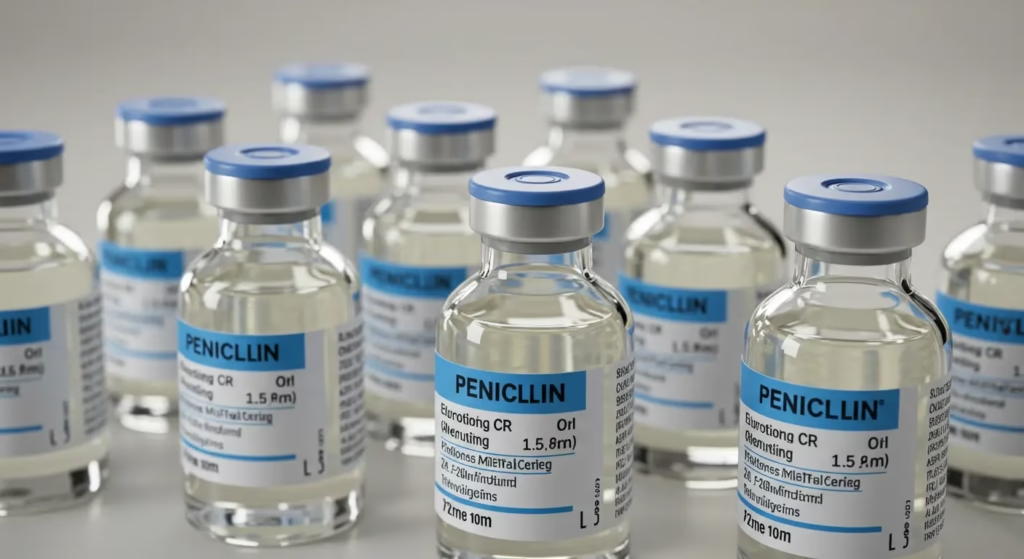
The Miracle Mold That Revolutionized Medicine
Picture this: it’s 1928, and a notoriously messy scientist named Alexander Fleming returns from vacation to find his lab in shambles. Among his scattered petri dishes, he notices something peculiar – a mysterious mold has invaded one of his bacterial cultures, creating a bacteria-free zone around itself. Most people would have tossed it in the trash, but Fleming’s “hmm, that’s weird” moment would end up saving millions of lives!
What Fleming accidentally discovered was penicillin – arguably history’s most influential “oops” moment! This fuzzy, unassuming mold would go on to transform medicine from a field where a simple cut could kill you into one where bacterial infections became manageable, treatable conditions.
From Lab Curiosity to Life-Saving Legend
Fleming’s discovery lounged around as a laboratory curiosity until 1940, when the dynamic duo of Ernst Boris Chain and Howard Florey rolled up their sleeves and isolated penicillin F, the purified compound that could actually be used as medicine. Talk about perfect timing – just as World War II was raging, suddenly doctors had a powerful weapon against infected wounds!
Their groundbreaking work was so revolutionary that in 1945, Fleming, Chain, and Florey took home the Nobel Prize in Physiology or Medicine. Not too shabby for a discovery that started with messy lab habits!
Why This Liquid Gold Costs More Than Fine Wine
At $300 per gallon, penicillin costs more than some premium wines – but unlike that expensive cabernet, this liquid might literally save your life! Today, penicillins include a family of antibiotics (penicillin V, penicillin G, benzathine penicillin, and procaine penicillin) that tackle everything from strep throat to dental abscesses.
The sky-high price tag comes down to a perfect storm of factors:
- Exclusivity Club: Only a handful of companies worldwide produce the active ingredient for penicillin – talk about a limited edition!
- Profit Squeeze: Despite being life-saving, penicillins offer surprisingly low profit margins (apparently, saving lives isn’t as lucrative as selling luxury handbags)
- Supply Strategy: Those few producers deliberately keep production levels low to maintain their market position
- Versatility Demand: The medicine battles Listeria, Clostridium, and Streptococci bacteria, treats lung infections in children, fights dental abscesses and tonsillitis, soothes middle ear infections, and even prevents rheumatic fever from recurring
Fun Fact: During WWII, penicillin was so precious that doctors would actually collect patients’ urine to extract and reuse the unmetabolized penicillin! Talk about recycling at its most extreme!
Next time you pop that antibiotic pill for a nasty infection, take a moment to appreciate the $300-per-gallon liquid inside – a substance that transformed human existence and continues to save countless lives nearly a century after a scientist noticed some weird mold in his messy lab!
14. Patchouli Oil – $810 per Gallon
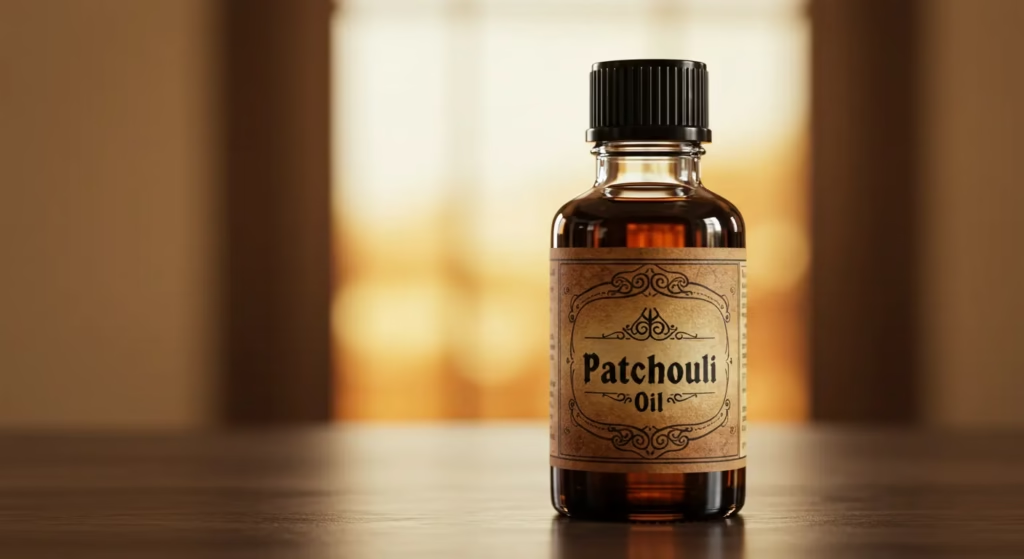
Imagine a scent so rich and earthy that it has been bottled, burned, and worn by everyone from hippies to high-fashion designers. That’s patchouli oil, a fragrant extract from the Pogostemon plant, a leafy green native to Indonesia, India, China, Thailand, Malaysia, and the Philippines.
Indonesia alone produces over 1,600 metric tons of patchouli oil, accounting for 90 percent of the global supply. Yet despite its abundance, it remains one of the most expensive essential oils in the world. The reason for that isn’t as simple as supply and demand.
Beyond the Scent: A Healing Powerhouse
Patchouli oil is more than just an intoxicating aroma. It has been used for centuries for its medicinal and therapeutic properties. It has anti-inflammatory effects, making it a popular choice for skin healing, mood enhancement, and pain relief. Inhaling its scent or applying it topically can:
- Act as a mild sedative, reducing stress and anxiety
- Function as an antiseptic, fighting off bacteria
- Work as a natural antidepressant, improving mood
- Help with fungal infections, fevers, and colds
- Prevent kidney and gallbladder stones
- Serve as a natural deodorant, eliminating bad breath and body odor
So Why Does It Cost $810 per Gallon?
The journey of patchouli oil from plant to product is anything but straightforward. It passes through multiple hands before reaching high-end perfume brands and wellness markets. The biggest beneficiaries of this trade are rarely the farmers.
- Farmers cultivate and harvest the plants, doing the hard work
- Intermediary traders and collectors buy up the supply at low prices
- By the time it reaches the market, these middlemen earn up to ten times more than the farmers, despite contributing nothing to the product’s actual value
Patchouli oil remains a symbol of luxury and holistic healing, but its high price is as much a reflection of the supply chain as it is of its benefits. The next time you smell its distinct scent, remember that it carries a history of trade, economics, and centuries-old tradition.
13. Cover Girl Nail Polish – $900 per Gallon
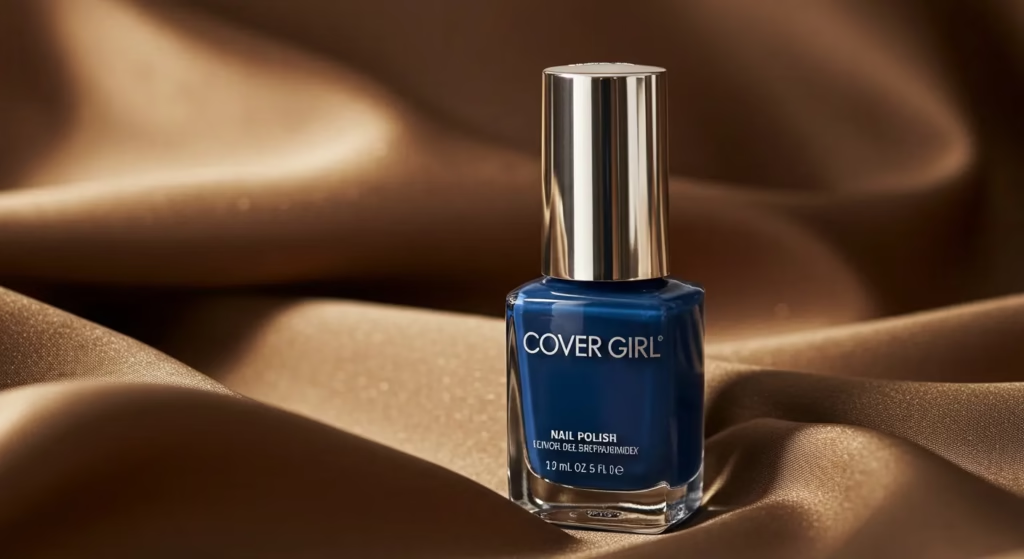
At first glance, nail polish seems like one of those everyday beauty products—cheap, colorful, and easy to replace. But when you break it down by the gallon, things get surprisingly expensive. With an average cost that lands it among the priciest liquids in the world, this seemingly simple cosmetic is anything but.
Most nail polishes start with nitrocellulose, a film-forming polymer that gives polish its signature smooth finish. This is dissolved in a solvent like ethyl acetate or butyl acetate, creating a fluid that spreads easily over nails before evaporating to leave behind a hardened, glossy coat.
But modern nail polish is more than just a mix of chemicals—it’s a carefully engineered formula designed for durability, shine, and that irresistible pop of color.
Why Does Nail Polish Cost So Much?
Not all nail polishes are created equal. While budget brands keep things simple, premium versions layer in a cocktail of advanced ingredients to improve wear and appearance. Here’s what makes high-end nail polish so expensive:
- Plasticizers keep the polish flexible, preventing cracks and chips
- Adhesive polymers help the formula stick to nails without peeling
- Thickening agents ensure shimmer and glitter stay evenly suspended
- Dyes and pigments create deep, vibrant colors
- Ultraviolet stabilizers protect against fading and discoloration from sunlight
Then there’s the luxury factor—some high-end brands infuse their formulas with mica, bismuth oxychloride, aluminum powder, or even natural pearls to achieve a unique, multi-dimensional sparkle. The result? A tiny bottle of polish might feel affordable, but when you add it up, the cost per gallon puts it in the same league as rare essential oils and designer fragrances.
So the next time you swipe on a fresh coat of polish, just remember—you’re wearing a tiny, high-tech chemical masterpiece on your fingertips.
12. Human Blood – $1,500 per Gallon
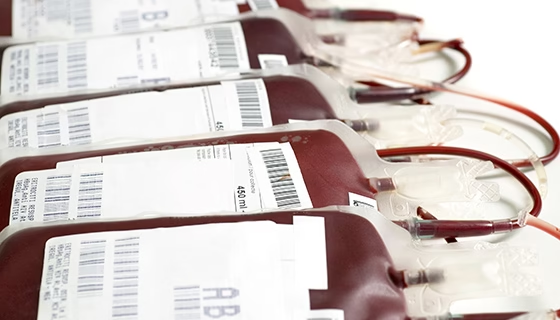
Blood is the lifeline of the human body, a complex liquid highway that carries oxygen, nutrients, hormones, and immune defenses to every cell. It also plays cleanup duty, ferrying away carbon dioxide and waste products. Without it, life simply wouldn’t be possible.
Despite its life-or-death importance, human blood isn’t exactly rare. The average adult has around five liters of it flowing through their veins at all times. So why does it cost $1,500 per gallon?
More Than Just a Red Liquid
Blood isn’t a single substance—it’s an intricate mix of:
- Plasma, the liquid component that makes up about 55 percent of blood, carrying proteins, electrolytes, and waste
- Red blood cells, responsible for oxygen transport
- White blood cells, the immune system’s defense team
- Platelets, the tiny cell fragments that help with clotting and wound healing
In medicine, whole blood transfusions are used when patients need all of these components at once—often in cases of severe trauma, major surgeries, or hemorrhagic shock. More commonly, blood is separated into red cells, plasma, and platelets, each used for different life-saving treatments.
Why Does Blood Cost So Much?
For something we all have inside us, human blood isn’t exactly easy to come by. The high cost isn’t because of scarcity, but because of the massive effort required to collect, process, and store it safely.
- Donation drives require organization, staffing, and strict screening procedures
- Testing and processing ensure that donated blood is free of diseases and safe for transfusion
- Cold storage and transportation keep blood viable before it reaches hospitals
The infrastructure behind blood donation and transfusion doesn’t run cheap, and with increasing demand in medical care, the costs keep rising. Blood may be freely donated, but making sure it’s available when and where it’s needed? That’s a multi-billion-dollar operation.
So next time you hear about a blood donation drive, consider rolling up your sleeve. A pint might not seem like much, but in the right hands, it could mean the difference between life and death.
11. Gamma Hydroxybutyric Acid (GHB) – $2,600 per Gallon
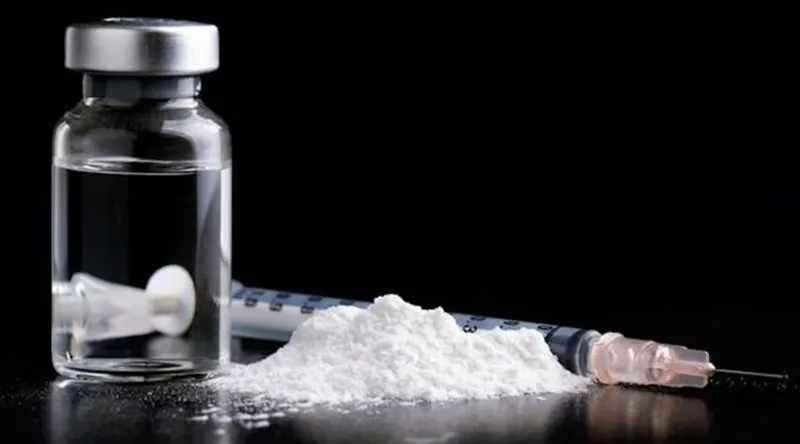
GHB is one of those substances that walks a fine line between medicine and menace. It’s a central nervous system depressant, naturally found in small amounts in the human brain and even in some beers, wines, beef, and citrus fruits. But when synthesized in a lab, it takes on a whole new identity—both as a prescription treatment and a notorious club drug.
Originally developed as a general anesthetic, GHB has legitimate medical uses, particularly in treating narcolepsy, opioid withdrawal, and alcohol use disorder. However, outside the medical world, it has earned a different reputation. It has been widely abused in party scenes, mixed into alcoholic drinks for its euphoric and sedative effects.
Why Does GHB Cost So Much?
GHB isn’t just expensive—it’s heavily controlled. It is made by combining gamma-butyrolactone (GBL) with either potassium hydroxide or sodium hydroxide, and while pharmaceutical-grade GHB exists, much of the supply found on the streets is synthesized illegally in clandestine labs.
Several factors drive its high price:
- Pharmaceutical GHB is tightly regulated, with limited legal production
- Illegal synthesis requires precursor chemicals that are difficult to obtain in some countries
- Demand in underground markets, particularly among partygoers and athletes, inflates its value
Despite its risks, GHB continues to exist in both medical and illicit spaces. Whether as a life-changing treatment for sleep disorders or a dangerous recreational substance, it remains one of the most controversial and expensive liquids in the world.
10. Black Printer Ink – $2,700 per Gallon
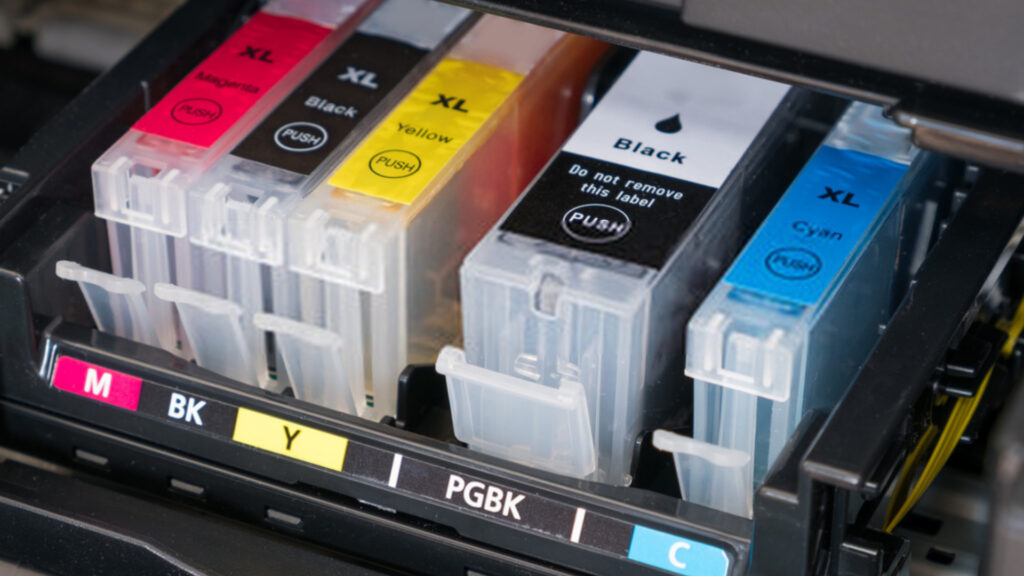
Black ink is one of those everyday essentials that most people don’t think twice about—until they see the price tag. In fact, printer ink is so expensive that, ounce for ounce, it often costs more than luxury perfumes or even fine champagne.
At its core, ink is a semi-liquid compound made from organic or inorganic pigments dissolved in a chemical solvent. It functions much like paint, but with a precision designed for high-quality text and images. Black ink, in particular, is the backbone of printing. Even when printing in color, black ink plays a crucial role in adding depth, contrast, and sharpness.
Most modern printers rely on the CMYK color model, which stands for Cyan, Magenta, Yellow, and Key (black). Over time, manufacturers developed two distinct types of black ink—one that is highly water-resistant for text printing and another that blends smoothly with colors for rich, detailed graphics.
Why Is Black Ink So Expensive?
For something so commonly used, black printer ink comes with a surprisingly high cost. The reason isn’t just about the materials—it’s also about the process and business strategy behind it.
Black ink is made by combining carbon black with varnish and a mix of chemical additives, including:
- Lubricants for smooth application
- Waxes and drying agents to prevent smudging
- Pigments for color depth and durability
- Surfactants to improve fluid consistency
Pigments are the most critical component. They are crushed into fine particles and evenly dispersed in the liquid, making the ink resistant to heat, solvents, and environmental wear. Many inks also include opacifiers, which enhance coverage and ensure deep, solid blacks on paper.
But beyond the chemistry, the biggest factor driving up the price is the business model of printer companies. Many manufacturers sell printers at a low cost, knowing that customers will be locked into buying proprietary ink cartridges at a premium. The built-in smart chips and patented designs prevent third-party ink refills, ensuring a steady stream of revenue for ink producers.
In the end, black ink isn’t just liquid pigment—it’s a carefully engineered, high-margin product designed to keep the printing industry profitable. And as long as documents need to be printed, the price isn’t coming down anytime soon.
9. Mercury – $3,400 per Gallon
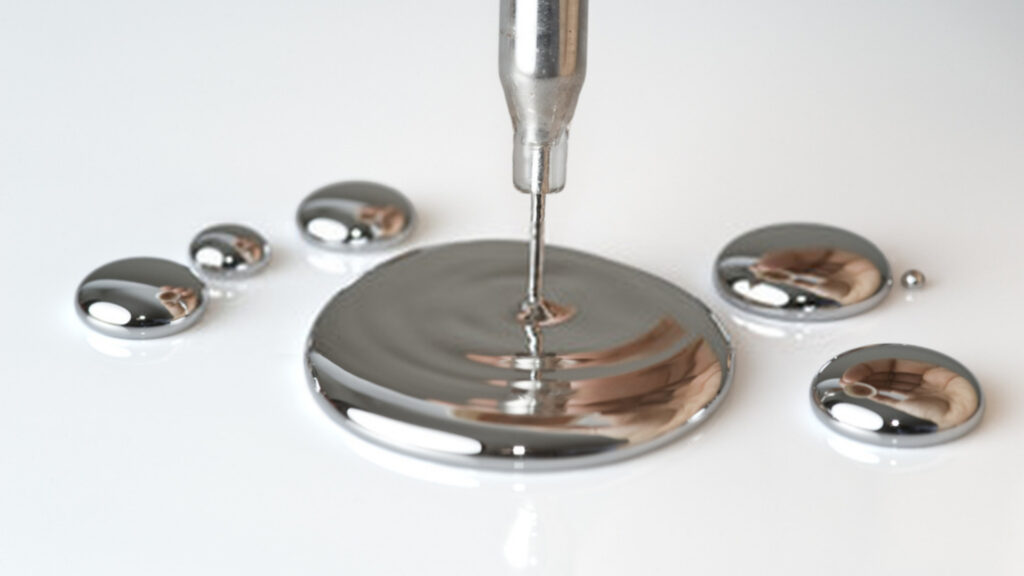
Mercury is a metal that defies expectations. Unlike iron, copper, or gold, it doesn’t sit in a solid state at room temperature. Instead, it flows like a molten river, its dense, silvery-white surface reflecting light in a way that makes it look almost alive.
Found in nature as cinnabar, or mercury sulfide, this liquid metal is extracted through a high-heat process that breaks it down into its pure, metallic form. Heating cinnabar to 580 degrees Celsius in the presence of oxygen releases mercury as a vapor, which is then cooled and condensed back into liquid form.
It may be mesmerizing to watch, but mercury is as dangerous as it is fascinating.
Why Is Mercury So Expensive?
Being the only metal that naturally exists as a liquid at room temperature makes mercury uniquely valuable. It has long been used in scientific instruments like barometers, thermometers, and manometers, where its extreme density allows for precise pressure measurements. It also plays a role in chlorine and sodium hydroxide production and has historically been used in certain medical applications and specialty batteries.
But with its usefulness comes a serious risk. Mercury evaporates easily, releasing invisible and odorless vapor into the air. Once inhaled, these microscopic metal particles pass through the lungs into the bloodstream, where they can reach the brain and cause neurological damage. Long-term exposure has been linked to agitation, sleep disorders, and even paralysis.
Spilled mercury is notoriously difficult to clean. The liquid beads up into tiny droplets that can seep into carpets, floorboards, and cracks, lingering for years if not properly removed. This toxic nature has led to strict regulations on its handling and use, making it more expensive and difficult to obtain.
Despite its dangers, mercury remains a critical element in certain industries, a metal unlike any other—both scientifically extraordinary and hazardous in equal measure.
8. Insulin – $9,400 per Gallon

Insulin is one of the most essential hormones in the human body, a biochemical key that unlocks cells and allows glucose to enter. Produced by the pancreas, it regulates blood sugar levels and helps store energy in the liver, muscles, and fat cells. Without it, the body struggles to process carbohydrates, proteins, and fats properly.
For millions of people, insulin isn’t just a hormone—it’s a lifeline. When the body fails to produce enough insulin, as in type 1 diabetes, or doesn’t use it effectively, as in type 2 diabetes, managing blood sugar becomes a daily challenge. In severe cases, synthetic insulin must be injected using syringes or insulin pens to prevent dangerous spikes or drops in glucose levels.
Why Is Insulin So Expensive?
Despite being discovered over a century ago, insulin remains one of the most expensive medicines in the world. Prices have more than tripled in the past 15 years, turning a life-saving drug into a financial burden for many patients. The reasons behind this price surge come down to a mix of economics, industry monopolies, and regulatory barriers.
- Captive Market – People with type 1 diabetes cannot survive without insulin. Since there is no alternative, they are forced to pay whatever price is set by pharmaceutical companies.
- Limited Competition – Only a handful of manufacturers control the global insulin supply, allowing them to dictate prices with little interference.
- No True Generics – Unlike traditional medications, insulin is a biologic drug, meaning it’s made from living cells rather than synthetic chemicals. Producing a biosimilar version requires passing strict regulatory tests, making it difficult for new competitors to enter the market.
This combination of necessity, limited suppliers, and regulatory challenges has kept insulin prices artificially high, despite growing demand. While efforts are being made to introduce more affordable options, for now, insulin remains not just one of the most valuable liquids on Earth, but also one of the most controversial.
7. Chanel No. 5 – $26,000 per Gallon

Chanel No. 5 isn’t just a perfume—it’s a legend. Launched in 1922, it was the first fragrance by French fashion icon Gabrielle “Coco” Chanel, a scent designed to break away from the overly simple, one-note perfumes of the time. Instead of mimicking a single flower, it introduced something revolutionary—a sophisticated blend that smelled like an abstract bouquet rather than a single bloom.
The mastermind behind the formula was Russian-French perfumer and chemist Ernest Beaux, who introduced aldehydes into the mix, a groundbreaking move that gave the fragrance its signature sparkling, almost effervescent quality. The result was an instant classic, worn by royalty, celebrities, and, famously, by Marilyn Monroe, who once claimed it was the only thing she wore to bed.
Why Is Chanel No. 5 So Expensive?
With a price tag that reaches $26,000 per gallon, Chanel No. 5 isn’t just about luxury—it’s about rarity, craftsmanship, and an almost century-old legacy.
- The perfume is built around rare floral ingredients, including May rose and jasmine from Grasse, France, where the flowers are harvested by hand under specific conditions to ensure their scent remains intact.
- It was the first perfume created using the floral-aldehyde group, which gives it a crisp, airy quality unlike anything else at the time.
- The formula has remained largely unchanged since 1921, except for the removal of natural civet musk and certain nitro-musks due to ethical and safety concerns.
From its carefully curated ingredients to its history as a symbol of elegance and sophistication, Chanel No. 5 remains one of the most iconic and expensive fragrances in the world. A single drop carries nearly a century of craftsmanship, and for many, the scent isn’t just perfume—it’s a statement.
6. Horseshoe Crab Blood – $60,000 per Gallon

Horseshoe crabs are living fossils, survivors from a time when the Earth was ruled by creatures far older than dinosaurs. These strange, armored beings have been crawling along the ocean floor for 450 million years, enduring mass extinctions that wiped out entire species. But despite their ancient resilience, their biggest challenge may be one they never evolved to face—humans.
They spend most of their lives in shallow ocean waters, moving along soft, muddy bottoms. Once a year, they make their way to shore for a ritual as old as their species—mating on sandy beaches before retreating to the depths. But in recent decades, humans have started harvesting them for something extraordinary hidden inside their bodies: their blood.
Why Is Horseshoe Crab Blood So Expensive?
Unlike human blood, which relies on hemoglobin to carry oxygen, horseshoe crabs use hemocyanin, a copper-based molecule that turns their blood an otherworldly shade of bright blue. But it’s not just the color that makes it special—it’s what’s inside.
Horseshoe crab blood contains immune cells that react instantly to the presence of harmful bacteria, forming a gel-like barrier around them. This natural defense mechanism has been harnessed by scientists to create Limulus Amebocyte Lysate (LAL), a test that has been saving human lives since the 1970s.
LAL is so sensitive that it can detect even the slightest bacterial contamination in vaccines, injectable medicines, and surgical implants. The FDA still requires LAL testing for certain pharmaceuticals, making horseshoe crab blood a non-negotiable part of medical safety worldwide.
The Cost of Saving Lives
To keep up with demand, the medical industry collects over 500,000 horseshoe crabs every year, draining about 30 percent of their blood before returning them to the ocean. But not all survive the process—nearly a third die, and those that make it back may suffer long-term effects.
Conservationists warn that the horseshoe crab population could decline by 30 percent over the next four decades if alternatives aren’t found. Scientists are working on synthetic replacements, but for now, this ancient creature’s blood remains an irreplaceable resource in medicine—one that comes at a steep price, both in dollars and in the survival of a species.
5. LSD – $123,000 per Gallon
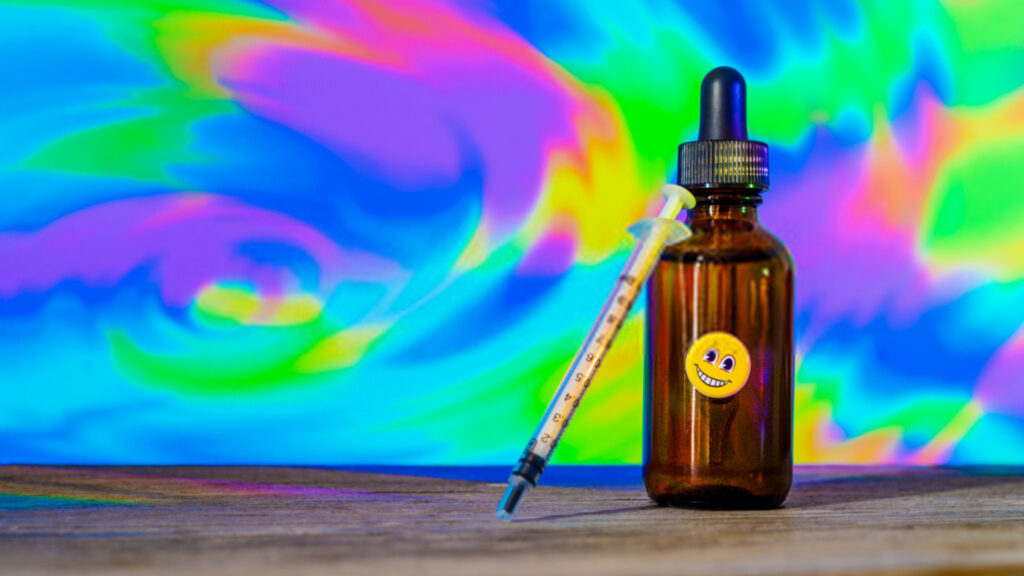
LSD, short for lysergic acid diethylamide, is a hallucinogen that has shaped countercultures, inspired scientific curiosity, and sparked political controversy for decades. Originally synthesized in 1938 by Swiss chemist Albert Hofmann, it remained a lab curiosity until 1943, when Hofmann accidentally ingested a tiny amount and discovered its powerful psychedelic effects.
Made from lysergic acid, found in the ergot fungus that grows on rye, LSD is one of the most potent mind-altering substances known to science. It is produced in crystalline form and dissolved into a liquid for distribution, often placed onto blotter paper, sugar cubes, or gelatin tablets. Despite being colorless and odorless, its effects are anything but subtle.
A microscopic dose—just 20 to 30 micrograms—can trigger intense sensory distortions, altered perception of time, and deep emotional shifts that last for 8 to 12 hours. Users call it a “trip,” but when things go wrong, it becomes a bad trip—an experience that can spiral into paranoia, panic, or psychological distress.
Why Is LSD So Expensive?
LSD is notoriously expensive, not because of its ingredients, but because of the complexity, secrecy, and legal risks involved in its production.
- Extreme potency – A gallon of pure liquid LSD could supply millions of doses, making even a tiny amount highly valuable.
- Challenging synthesis – Unlike many street drugs, LSD requires advanced chemistry skills, specialized lab equipment, and hard-to-obtain precursor chemicals.
- Severe legal consequences – As a Schedule I controlled substance, LSD production and distribution carry harsh criminal penalties, limiting supply and driving up prices.
LSD Use in the Modern World
Once associated with 1960s counterculture, LSD has been making a quiet comeback. Between 2015 and 2022, its use among American adults increased by 70%. Today, around 14% of Americans have tried LSD at least once in their lives, and in 2021 alone, 4.3 million people used it.
While still illegal in most places, researchers are revisiting LSD’s potential benefits. Clinical trials suggest it may help treat depression, PTSD, and addiction, reigniting scientific interest in a substance that has spent decades in the shadows.
One thing remains certain—a single gallon of liquid LSD contains enough doses to send millions of people on a trip they’ll never forget.
4. Thailand King Cobra Venom – $153,000 per Gallon

The king cobra isn’t just another snake—it’s a legend. The longest venomous snake in the world, stretching up to 18 feet, it has a reputation that matches its size. Its bite delivers a potent mix of neurotoxins, strong enough to kill an elephant or send an unlucky human into paralysis within minutes.
But beyond its deadly reputation, king cobra venom holds something even more intriguing: the potential to save lives.
What Makes King Cobra Venom So Powerful?
Unlike other snakes that rely on brute force toxins to break down flesh, the king cobra’s venom is designed for efficiency. It primarily consists of alpha-neurotoxins, which shut down nerve signals by targeting receptors in the nervous system. The result? Paralysis, respiratory failure, and—without treatment—death.
But venom isn’t just a weapon. Inside this toxic cocktail are compounds that scientists are studying for medical breakthroughs.
Why Is King Cobra Venom Worth $153,000 per Gallon?
For all its deadly potential, this venom is also a goldmine for scientific and medical research. It has been found to contain properties that could lead to treatments for some of the most challenging human conditions.
- Pain Management – Some components of king cobra venom act on pain receptors, leading researchers to explore non-addictive painkillers inspired by its effects.
- Neurological Research – The way the venom affects nerve signals is helping scientists understand neurodegenerative diseases like multiple sclerosis.
- Cancer Treatment – Early studies suggest that certain proteins in the venom could target and destroy cancer cells, offering a potential breakthrough in oncology.
The Ethical Dilemma Behind Cobra Venom
With a price tag this high, demand for king cobra venom is soaring—but so is the threat to the species. The snakes are often captured from the wild, kept in captivity for venom extraction, and then released under questionable conditions. Since king cobras are already listed as vulnerable due to habitat loss and hunting, conservationists warn that unethical venom harvesting could push them closer to extinction.
Science may one day unlock the full potential of this venom, turning it from a deadly toxin into a medical lifesaver. But for now, king cobra venom remains one of the most valuable and controversial substances in the world—a rare liquid where danger and discovery go hand in hand.
3. Scorpion Venom – $39,000,000 per Gallon

Scorpions have been around for hundreds of millions of years, long before the first dinosaurs walked the Earth. Small, armored, and armed with a venomous sting, they have perfected survival in some of the harshest environments on the planet. But their real power isn’t in their pincers—it’s in the microscopic drops of venom they inject with their tails.
Of the thousands of scorpion species, only about 25 have venom that is deadly to humans. Among them, the deathstalker scorpion (Leiurus quinquestriatus) is one of the most feared. Its sting delivers a potent neurotoxin that can shut down nerve signals, cause paralysis, and in severe cases, lead to respiratory failure. But what makes this venom truly extraordinary isn’t its ability to kill—it’s its potential to heal.
Why Is Scorpion Venom So Expensive?
At $39 million per gallon, scorpion venom is the most expensive liquid on Earth. The price isn’t just about rarity—it’s about how unbelievably difficult it is to collect.
- Tiny Yield – A single scorpion produces just 2 milligrams of venom at a time. To collect a full gallon, you’d have to milk a scorpion nearly four million times.
- Slow and Delicate Process – Venom extraction is still done mostly by hand, with researchers carefully stimulating the scorpion’s tail to release tiny droplets. It’s slow, painstaking, and dangerous work.
The Hidden Power of Scorpion Venom
Despite its fearsome reputation, scorpion venom isn’t just a weapon—it’s a scientific goldmine. Inside this toxic cocktail are compounds with properties that could lead to groundbreaking medical treatments.
- Fighting Cancer – A peptide called chlorotoxin, found in deathstalker venom, has shown the ability to bind only to cancerous brain cells, leaving healthy cells untouched. Researchers are exploring its use in treating glioblastoma, one of the deadliest brain tumors.
- New Antibiotics – Some compounds in scorpion venom have been found to kill antibiotic-resistant bacteria, potentially offering a solution to one of modern medicine’s biggest threats.
- Pain Relief – Certain venom peptides act on nerve receptors in a way that mimics powerful painkillers without the risk of addiction, opening the door to new pain management treatments.
The Future of Scorpion Venom
Scientists are working on ways to synthetically produce the key components of scorpion venom to reduce dependence on wild harvesting. But for now, each microscopic drop is still collected the hard way—one sting at a time.
It’s a liquid that can paralyze and kill, yet it holds the potential to save lives. That paradox is what makes scorpion venom not just the most expensive liquid on the planet, but one of the most fascinating.
2. Horse Semen – Up to $49 Million per Gallon

It might not be the first thing that comes to mind when thinking about valuable liquids, but in the world of elite breeding, horse semen is worth more than gold. Some of the most sought-after stallions can command staggering fees for their genetic material, with certain champion thoroughbreds fetching up to $49 million per gallon when broken down by volume.
The reason? It’s all about pedigree, performance, and legacy.
Why Is Horse Semen So Expensive?
Not all horse semen carries a sky-high price tag. The value is determined by the stallion’s racing history, bloodline, and the demand for his offspring. In disciplines like thoroughbred racing and show jumping, the right genetics can mean the difference between an average horse and a champion.
- Proven Bloodlines – The most expensive stallions come from elite pedigrees, with generations of racing success behind them. A prime example is Galileo, one of the most influential sires in modern racing. His stud fee was never publicly disclosed, but estimates suggest his offspring collectively earned billions, making his genetic material priceless. (Standardbred Canada)
- Artificial Insemination and Global Demand – While thoroughbred racing rules prohibit artificial insemination, other equine sports like show jumping and dressage allow it. This means top stallions can have their semen collected, frozen, and shipped worldwide, significantly increasing their earning potential.
- Investment in Future Champions – Owners and breeders are willing to spend enormous sums on semen because the resulting foals have the potential to win millions in prize money and become future sires themselves. It’s a long-term bet that can pay off in spectacular fashion.
The Science Behind It
Extracting and processing horse semen is a precise and highly controlled procedure. The process involves:
- Collecting semen using an artificial mare and a specialized collection device
- Evaluating the sample for sperm count, motility, and viability
- Freezing and storing it in small vials called straws, each containing a specific number of sperm cells
- Shipping it to breeders, where it can be used years or even decades later
A single straw from a top show-jumping stallion like Big Star can cost $1,200, and that’s just for one attempt. Breeding a mare to a world-class stallion can require multiple doses, pushing the total cost into the tens of thousands of dollars per foal. (Business Insider)
A Billion-Dollar Industry
The global horse breeding industry is worth billions, with elite stallions contributing to bloodlines that shape the future of equine sports. Every drop of their genetic material is carefully managed, marketed, and stored, ensuring that the next generation of champions is always on the horizon.
For those in the know, investing in top-tier horse semen isn’t just about breeding—it’s about betting on the future of the sport itself.
1. Zolgensma — $2.1 Million per Dose (5.5 mL)
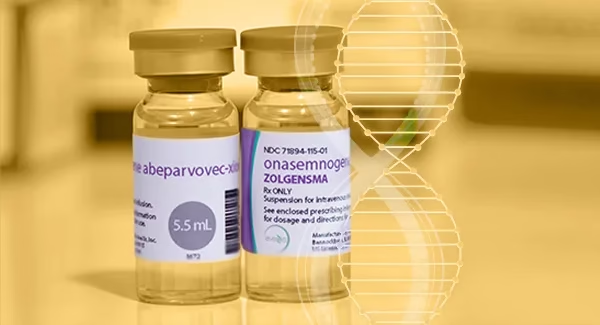
A single dose of Zolgensma costs more than a luxury sports car, but for families battling spinal muscular atrophy (SMA), this tiny vial holds something far more valuable—hope. Approved by the FDA in 2019, Zolgensma is a one-time gene therapy designed to address the root cause of SMA, a rare and devastating genetic disorder that robs infants of their ability to move, swallow, and even breathe.
SMA is caused by a missing or faulty SMN1 gene, which is crucial for motor neuron survival. Without it, the muscles waste away, leading to progressive weakness and, in severe cases, early death. Zolgensma works by delivering a functional copy of the SMN1 gene directly into the patient’s cells, effectively rewiring their genetic code to stop the disease in its tracks. Unlike traditional treatments that require lifelong injections, this is a one-and-done therapy—a single dose that could change a child’s future.
Why Does Zolgensma Cost So Much?
At $2.1 million per dose, Zolgensma is one of the most expensive medicines in the world, but the price isn’t just about profit—it reflects the staggering cost of developing a breakthrough like this.
- Decades of Research – Developing a gene therapy isn’t like mixing up a new drug in a lab. It takes over 10 years and billions of dollars to fine-tune a treatment that can safely rewrite genetic instructions inside the human body.
- High Failure Rates – Most drugs never make it to market. In fact, 86% of experimental treatments fail in clinical trials, meaning companies must recoup the costs of the many failed attempts before finding a single success.
- Complex Manufacturing – Unlike traditional pharmaceuticals, gene therapies involve custom-designed viruses that safely deliver new genetic material into human cells. These are engineered with extreme precision, making the production process time-consuming and expensive.
Despite the high cost, Zolgensma offers something that no other treatment does—a potential cure. For families facing the heartbreaking reality of SMA, a one-time infusion of this medicine isn’t just a treatment. It’s a lifeline, a second chance, and a glimpse at a future they never thought possible.
Conclusion: The True Cost of Value
From cutting-edge medicine to high-end luxury, the world’s most expensive liquids shape industries in ways most people never realize. Some, like horseshoe crab blood and insulin, are essential to saving lives, while others, like scorpion venom and LSD, push the frontiers of medical research and neuroscience. Then there are substances like liquid metals and rare perfume ingredients, which exist at the intersection of science, craftsmanship, and exclusivity.
But behind these staggering price tags lies a more complex story—one of ethics, sustainability, and the unintended consequences of human demand.
- Horseshoe crab populations are dwindling due to overharvesting, even though synthetic alternatives like recombinant factor C (rFC) exist. If unchecked, this ancient species could face devastating declines.
- The scorpion venom trade is full of misinformation, with exaggerated claims of its profitability fueling illegal poaching that disrupts ecosystems.
- Millions of people struggle to afford insulin, a drug that should be widely accessible but remains locked behind patents and corporate pricing strategies.
- Mercury, once a scientific marvel, has become an environmental hazard, forcing industries to seek safer alternatives.
Can Science Redefine Value?
The good news is that scientific innovation is reshaping the future of these precious liquids.
- Biotechnology is producing lab-grown venom peptides and synthetic insulin, reducing the need for unethical or exploitative harvesting.
- rFC-based endotoxin tests offer a safer, more sustainable alternative to horseshoe crab blood, potentially ending its use in pharmaceutical safety testing.
- Psychedelic research is bringing new legitimacy to LSD and other hallucinogens, exploring their potential in treating mental health conditions.
Some liquids will always be rare, valuable, and difficult to produce. But as technology advances, many of these substances could become more ethical, sustainable, and accessible. The real challenge isn’t just about what they cost—it’s about ensuring their value doesn’t come at the expense of future generations or the natural world.
